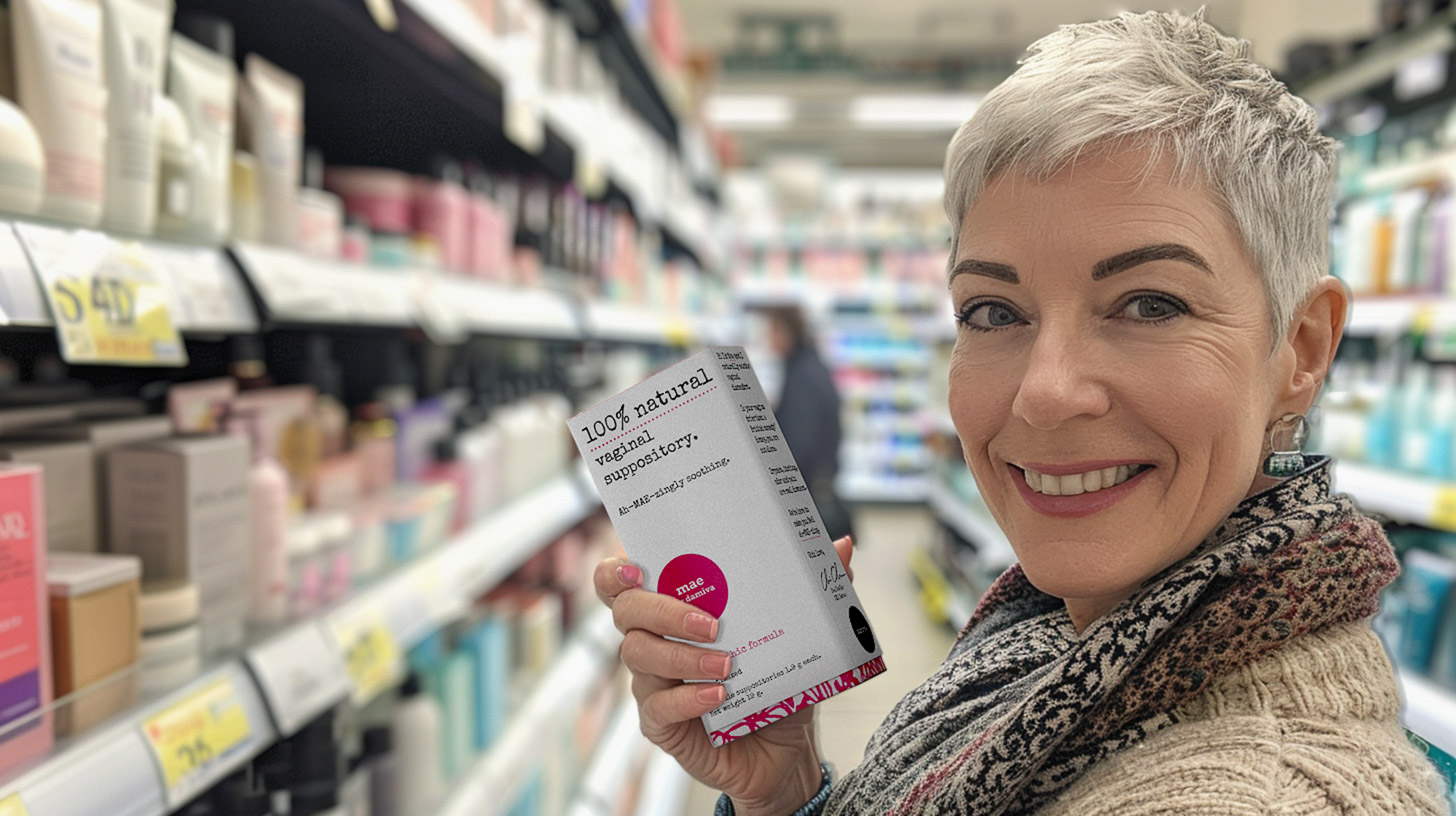Introduction
Understanding Perimenopause and Postmenopause
Perimenopause and postmenopause are two significant phases in a woman’s life that mark the transition from reproductive years to the cessation of menstruation and beyond. **Perimenopause**, often referred to as the menopausal transition, is the period leading up to menopause. It typically begins in a woman’s 40s but can start as early as the mid-30s or as late as the early 50s. This phase is characterized by hormonal fluctuations, particularly a decline in estrogen and progesterone, which can lead to a variety of symptoms such as irregular periods, hot flashes, night sweats, and mood swings. Perimenopause can last anywhere from a few months to over a decade, ending when a woman has gone 12 consecutive months without a menstrual period, marking the onset of menopause.
**Postmenopause** begins immediately after menopause and continues for the rest of a woman’s life. During this phase, the ovaries produce very low levels of estrogen and progesterone, which can lead to long-term health considerations such as an increased risk of osteoporosis and cardiovascular disease. Common symptoms during postmenopause can include vaginal dryness, decreased libido, and continued hot flashes, although these symptoms often diminish over time.
Why This Article Matters
Navigating the journey from perimenopause to postmenopause can be challenging and confusing for many women. The hormonal changes and associated symptoms can significantly impact daily life, emotional well-being, and long-term health. Despite the prevalence of these experiences, many women feel unprepared and unsupported during this transition.
This article aims to provide comprehensive, evidence-based information to help women understand what to expect during perimenopause and postmenopause. By addressing common questions and concerns, we hope to empower women with the knowledge they need to manage their symptoms effectively and make informed decisions about their health care.
**Why is this important?** Here are a few reasons:
1. **Prevalence of Symptoms**: Nearly 90% of women experience bothersome symptoms during perimenopause, prompting them to seek medical advice. Understanding these symptoms can help women manage them more effectively.
2. **Impact on Quality of Life**: Symptoms like hot flashes, sleep disturbances, and mood swings can significantly affect a woman’s quality of life. Knowledge about these symptoms and their management can improve daily functioning and overall well-being.
3. **Long-term Health**: Postmenopausal women face increased risks for conditions such as osteoporosis and heart disease. Awareness and proactive management can mitigate these risks.
4. **Emotional and Psychological Effects**: The transition can also bring emotional and psychological challenges. Understanding these changes can help women seek appropriate support and treatment.
By delving into the definitions, symptoms, and management strategies for perimenopause and postmenopause, this article aims to be a valuable resource for women navigating this critical phase of life. Whether you are just beginning to experience symptoms or are well into postmenopause, the information provided here will help you understand your body better and take control of your health.
What is Perimenopause?
Definition and Duration
Perimenopause is the transitional phase leading up to menopause, marking the end of a woman’s reproductive years. During this period, the ovaries gradually produce less estrogen, causing menstrual cycles to become irregular. This phase can begin as early as the mid-30s or as late as the mid-50s and typically lasts about four years, though it can range from a few months to up to eight years. Perimenopause ends when a woman has gone 12 consecutive months without a menstrual period, at which point she has officially reached menopause.
Common Symptoms
The symptoms of perimenopause can vary widely among women, but some of the most common include:
- Irregular periods: Menstrual cycles may become shorter or longer, and the flow may be lighter or heavier.
- Hot flashes and night sweats: Sudden feelings of heat, often accompanied by sweating and flushing, can disrupt daily activities and sleep.
- Sleep disturbances: Difficulty falling asleep or staying asleep, often due to night sweats.
- Mood changes: Increased irritability, mood swings, and a higher risk of depression.
- Vaginal dryness: Reduced lubrication can make intercourse uncomfortable.
- Decreased fertility: Irregular ovulation reduces the likelihood of conception.
- Changes in sexual function: Altered sexual arousal and desire.
- Bone loss: Decreasing estrogen levels can lead to a higher risk of osteoporosis.
- Changing cholesterol levels: An increase in LDL (“bad” cholesterol) and a decrease in HDL (“good” cholesterol) can raise the risk of heart disease.
Hormonal Changes
The hormonal changes during perimenopause are primarily due to fluctuating and declining levels of estrogen and progesterone. Estrogen, produced by the ovaries, plays a crucial role in regulating the menstrual cycle and maintaining reproductive health. As estrogen levels decrease, the balance with progesterone is disrupted, leading to the various symptoms associated with perimenopause. These hormonal fluctuations can be unpredictable, causing symptoms to vary in intensity and frequency.
Impact on Daily Life
Perimenopause can significantly impact a woman’s daily life, both physically and emotionally. The unpredictability of menstrual cycles can be inconvenient and sometimes distressing. Hot flashes and night sweats can disrupt sleep, leading to fatigue and irritability. Mood swings and increased risk of depression can affect relationships and overall mental health. Vaginal dryness and changes in sexual function can impact intimate relationships. Additionally, the risk of bone loss and heart disease necessitates a focus on long-term health and lifestyle adjustments.
While perimenopause is a natural phase of life, its symptoms can be challenging. Understanding these changes and seeking appropriate medical advice can help manage the transition more comfortably.
Transitioning to Menopause
Signs You Are Entering Menopause
The transition to menopause, known as perimenopause, is marked by a variety of signs and symptoms. One of the most noticeable signs is a change in menstrual cycles. Periods may become irregular, shorter, or longer, and the flow may vary from light to heavy. Other common symptoms include hot flashes, night sweats, and sleep disturbances. These symptoms are often accompanied by mood swings, irritability, and anxiety. Additionally, some women may experience vaginal dryness, decreased libido, and discomfort during intercourse. It’s important to note that these symptoms can vary widely among individuals, and not everyone will experience all of them.
Medical Criteria for Menopause
Medically, menopause is defined as the point in time when a woman has not had a menstrual period for 12 consecutive months. This marks the end of the reproductive years. The average age for menopause in the United States is 51, but it can occur earlier or later. To confirm menopause, healthcare providers may conduct blood tests to measure levels of follicle-stimulating hormone (FSH) and estradiol (E2). Elevated FSH levels and low estradiol levels typically indicate that the ovaries are producing less estrogen, signaling the onset of menopause. It’s also important to rule out other medical conditions that could cause similar symptoms.
Emotional and Psychological Effects
The transition to menopause can have significant emotional and psychological effects. Many women report experiencing mood swings, anxiety, and depression during this time. These emotional changes can be attributed to fluctuating hormone levels, particularly estrogen, which affects neurotransmitters in the brain. Additionally, the physical symptoms of menopause, such as hot flashes and sleep disturbances, can contribute to feelings of irritability and stress. It’s also a period of significant life changes, such as children leaving home or caring for aging parents, which can add to emotional strain.
It’s crucial to address these emotional and psychological effects holistically. Open communication with healthcare providers, family, and friends can provide much-needed support. Counseling or therapy may also be beneficial for managing mood swings and anxiety. Mindfulness practices, such as meditation and yoga, can help reduce stress and improve emotional well-being. Understanding that these changes are a normal part of the menopausal transition can also help in coping with the emotional challenges.
In summary, the transition to menopause is a complex process that involves a range of physical, emotional, and psychological changes. Recognizing the signs, understanding the medical criteria, and addressing the emotional effects can help women navigate this significant life stage more comfortably.
What is Postmenopause?
Definition and Duration
Postmenopause is the stage of a woman’s life that begins 12 months after her last menstrual period and continues for the rest of her life. This phase marks the end of the reproductive years, as the ovaries have ceased releasing eggs and the production of estrogen and progesterone has significantly decreased. The average age for entering postmenopause is around 51, but this can vary depending on individual health and genetic factors.
Common Symptoms
While some women may experience a reduction in the intensity of menopausal symptoms, others may continue to face various challenges. Common symptoms during postmenopause include:
- Hot flashes and night sweats: These can persist for years after menopause due to low estrogen levels.
- Vaginal dryness and pain during sex: Decreased estrogen can lead to thinning and drying of vaginal tissues, making intercourse uncomfortable.
- Depression and mood swings: Hormonal changes can continue to affect mental health, leading to mood fluctuations and depressive episodes.
- Changes in sex drive: Many women experience a decrease in libido.
- Insomnia: Sleep disturbances can persist, often exacerbated by night sweats.
- Dry skin and hair loss: Reduced hormone levels can affect skin elasticity and hair health.
- Weight changes: Metabolic changes can lead to weight gain or difficulty losing weight.
- Urinary incontinence: Weakened pelvic muscles and changes in the urinary tract can cause leakage.
If these symptoms become severe or interfere with daily life, it is advisable to consult a healthcare provider for appropriate treatment options.
Long-term Health Considerations
Postmenopause brings with it several long-term health considerations that require attention and proactive management:
- Osteoporosis: The rapid loss of bone density due to decreased estrogen levels increases the risk of osteoporosis and fractures. Regular bone density tests and a diet rich in calcium and vitamin D can help manage this risk.
- Cardiovascular disease: The protective effect of estrogen on the heart diminishes, raising the risk of heart disease, stroke, and high blood pressure. Maintaining a healthy diet, regular exercise, and avoiding tobacco products are crucial preventive measures.
- Genitourinary syndrome of menopause: This condition, formerly known as vaginal atrophy, involves thinning and drying of vaginal tissues, leading to discomfort and urinary issues. Treatments include vaginal lubricants, topical estrogen, and laser therapy.
- Mental health: Mood swings, anxiety, and depression can persist. It is important to seek support from mental health professionals if these issues arise.
In summary, postmenopause is a significant phase in a woman’s life that requires ongoing attention to both physical and mental health. By understanding the common symptoms and long-term health considerations, women can take proactive steps to manage their well-being and live a fulfilling life postmenopause.
Managing Symptoms Naturally
Diet and Nutrition
A balanced diet is crucial for managing perimenopausal and postmenopausal symptoms. Consuming a variety of fruits, vegetables, lean proteins, and whole grains can help alleviate some of the discomforts associated with hormonal changes. **Calcium and vitamin D** are particularly important for maintaining bone health, as the risk of osteoporosis increases during this time. Dairy products like yogurt, cheese, and milk, as well as leafy greens and fortified foods, are excellent sources of these nutrients.
**Phytoestrogens**, found in foods like soy, flaxseeds, and legumes, can mimic estrogen in the body and may help balance hormones. However, it’s essential to consume these in moderation and as part of a balanced diet. Avoiding triggers such as caffeine, alcohol, and spicy foods can also help reduce hot flashes and night sweats.
Exercise and Physical Activity
Regular physical activity offers numerous benefits for those going through perimenopause and postmenopause. Exercise can help manage weight, improve mood, and reduce the severity of hot flashes and night sweats. Aim for at least **150 minutes of moderate-intensity exercise** per week, which can include activities like walking, jogging, cycling, or swimming.
**Resistance training** is also beneficial for maintaining muscle mass and bone density. Incorporating exercises like weight lifting or body-weight exercises can help mitigate the risk of osteoporosis. Additionally, activities like yoga and tai chi can improve flexibility, balance, and overall well-being.
Herbal Remedies and Supplements
Many people turn to herbal remedies and supplements to manage perimenopausal and postmenopausal symptoms. **Black cohosh** is commonly used to treat hot flashes, night sweats, and sleep disturbances, but it can interact with prescription medications, so consult a healthcare provider before use. **Red clover** and other herbal supplements like evening primrose oil and ginseng are also popular, though their effectiveness varies, and more research is needed.
It’s crucial to approach herbal supplements with caution. The FDA does not regulate these products as strictly as conventional medications, so their safety and efficacy are not always guaranteed. Always consult a healthcare professional before starting any new supplement regimen.
Mindfulness and Stress Reduction
Mindfulness and stress reduction techniques can significantly improve the quality of life during perimenopause and postmenopause. **Mindfulness-based stress reduction (MBSR)**, which includes practices like meditation, yoga, and deep breathing exercises, can help reduce anxiety, improve sleep quality, and alleviate hot flashes.
**Yoga** and **tai chi** are particularly effective for promoting relaxation and mental clarity. These practices not only help manage stress but also improve physical health by enhancing flexibility and balance. Incorporating these activities into your daily routine can provide a holistic approach to managing menopausal symptoms.
In summary, natural methods such as a balanced diet, regular exercise, herbal supplements, and mindfulness techniques can offer significant relief from the symptoms of perimenopause and postmenopause. Always consult with healthcare professionals to tailor these strategies to your individual needs and ensure they complement any other treatments you may be receiving.
Hormone Replacement Therapy (HRT)
What is HRT?
Hormone Replacement Therapy (HRT) is a treatment designed to alleviate the symptoms of menopause by replenishing the hormones that the body no longer produces in sufficient quantities. As women transition into menopause, their ovaries produce less estrogen and progesterone, leading to symptoms such as hot flashes, night sweats, vaginal dryness, and mood swings. HRT aims to restore hormonal balance and improve quality of life during this period.
There are two main types of HRT:
- Estrogen-only therapy: Typically prescribed for women who have had a hysterectomy, this therapy involves taking estrogen alone.
- Combination therapy: This includes both estrogen and progesterone (or progestin, a synthetic form of progesterone) and is recommended for women who still have their uterus to reduce the risk of endometrial cancer.
HRT can be administered in various forms, including pills, patches, gels, creams, and vaginal rings, allowing for personalized treatment based on individual needs and preferences.
Benefits and Risks
HRT offers several benefits, but it also comes with potential risks. Understanding both is crucial for making an informed decision.
Benefits:
- Relief from menopausal symptoms: HRT is highly effective in reducing hot flashes, night sweats, vaginal dryness, and mood swings.
- Bone health: HRT helps prevent bone loss and reduces the risk of osteoporosis and fractures.
- Heart health: Starting HRT within ten years of menopause may reduce the risk of heart disease.
- Colon cancer: Combined HRT has been associated with a decreased risk of colon and rectal cancers.
Risks:
- Breast cancer: Both estrogen-only and combined HRT are associated with an increased risk of breast cancer, particularly with long-term use.
- Cardiovascular issues: HRT can increase the risk of stroke, blood clots, and heart attack, especially in older women or those who start HRT more than ten years after menopause.
- Gallbladder disease: There is a slightly higher risk of developing gallbladder disease with HRT.
- Endometrial cancer: Estrogen-only HRT increases the risk of endometrial cancer in women who have not had a hysterectomy.
It is essential to discuss these risks and benefits with a healthcare provider to determine if HRT is appropriate for you, considering your medical history and personal risk factors.
Natural Alternatives to HRT
For those who prefer not to use HRT or are unable to due to medical reasons, several natural alternatives can help manage menopausal symptoms.
Diet and Nutrition:
- Phytoestrogens: Foods like soy, flaxseeds, and legumes contain plant-based estrogens that may help alleviate symptoms.
- Calcium and Vitamin D: Essential for bone health, these nutrients can be obtained through diet or supplements.
Herbal Remedies and Supplements:
- Black Cohosh: May help reduce hot flashes and night sweats, though research is mixed.
- Red Clover: Contains phytoestrogens and may provide symptom relief.
- Evening Primrose Oil: Often used for hot flashes and mood swings.
Exercise and Physical Activity:
Regular exercise can help manage weight, improve mood, and strengthen bones. Weight-bearing exercises like walking, jogging, and strength training are particularly beneficial.
Mindfulness and Stress Reduction:
Techniques such as yoga, meditation, and deep-breathing exercises can help manage stress and improve overall well-being.

⭐️⭐️⭐️⭐️⭐️ “My biggest symptoms are GSM, and because of Mae, they are mostly addressed. I have lived Mae for almost 7 years, and I endorse it all the time.” Margaret C., Damiva Mae Customer
⭐️⭐️⭐️⭐️⭐️ “I’m in my 60’s and post menopause. My doctor recommended I try Damiva MAE, after taking me off hormones (due to developing cysts). I LOVE it. All natural, no hormones, Great vaginal moisturizer. Easy to insert and pleasant smell. So Thankful for MAE.” Paula, Damiva Mae Customer
Living Your Best Life Postmenopause
Maintaining Energy Levels
As you transition into postmenopause, maintaining energy levels can be a challenge due to hormonal changes and the natural aging process. However, there are several strategies to help keep your energy up:
- Balanced Diet: Consuming a diet rich in fruits, vegetables, lean proteins, and whole grains can provide sustained energy. Avoiding excessive sugar and processed foods can prevent energy crashes.
- Regular Exercise: Engaging in regular physical activity, such as walking, swimming, or yoga, can boost your energy levels. Exercise releases endorphins, which can improve your mood and energy.
- Hydration: Staying well-hydrated is crucial for maintaining energy. Aim to drink at least eight glasses of water a day.
- Quality Sleep: Ensuring you get enough restful sleep is essential for energy. Establish a regular sleep routine and create a comfortable sleep environment.
Enhancing Mental Clarity
Mental clarity can sometimes diminish postmenopause, but there are ways to keep your mind sharp:
- Brain-Boosting Foods: Foods rich in omega-3 fatty acids, such as fish, walnuts, and flaxseeds, can support brain health.
- Mental Exercises: Engage in activities that challenge your brain, such as puzzles, reading, or learning a new skill.
- Mindfulness Practices: Techniques like meditation and deep-breathing exercises can reduce stress and improve focus.
- Social Interaction: Staying socially active can stimulate your mind and improve cognitive function.
Improving Sleep Quality
Many women experience sleep disturbances postmenopause. Here are some tips to improve sleep quality:
- Consistent Sleep Schedule: Go to bed and wake up at the same time every day, even on weekends.
- Relaxing Bedtime Routine: Engage in calming activities before bed, such as reading or taking a warm bath.
- Comfortable Sleep Environment: Ensure your bedroom is cool, dark, and quiet. Invest in a comfortable mattress and pillows.
- Avoid Stimulants: Limit caffeine and alcohol intake, especially in the evening.
Nurturing Sexual Health
Sexual health can change postmenopause, but there are ways to maintain a fulfilling sex life:
- Open Communication: Talk openly with your partner about your needs and any changes you’re experiencing.
- Lubrication: Use water-based lubricants to alleviate vaginal dryness and make sex more comfortable.
- Hormone Therapy: Consult your healthcare provider about hormone replacement therapy (HRT) or other treatments that can help with sexual health.
- Regular Intimacy: Maintaining regular sexual activity can help keep tissues healthy and improve libido.
Building Strong Relationships
Strong relationships are vital for emotional well-being postmenopause. Here’s how to nurture them:
- Stay Connected: Make an effort to stay in touch with family and friends. Regular social interactions can boost your mood and provide support.
- Join Groups: Participate in community groups or clubs that interest you. This can help you meet new people and build new friendships.
- Quality Time: Spend quality time with loved ones. Engage in activities you enjoy together, whether it’s a hobby, a walk, or a meal.
- Seek Support: Don’t hesitate to seek support from a therapist or counselor if you’re struggling with relationship issues or emotional challenges.
By focusing on these areas, you can navigate postmenopause with vitality and joy, embracing this new chapter of life with confidence and enthusiasm.












